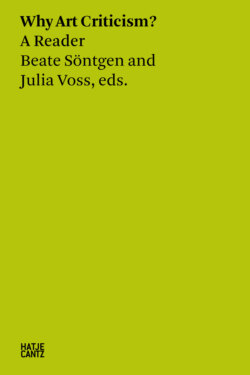Читать книгу Why Art Criticism? A Reader - Группа авторов - Страница 30
ОглавлениеLuis Vidales
Luis Vidales, a Colombian poet, statistician, and art critic, was born in Calarcá in 1900 and died in Bogotá at the age of ninety. He rose to fame with the 1926 publication of Suenan Timbres, a book of poems that broke with all the classical schemes that prevailed in Colombian early twentieth-century poetry, the only poetry in the country considered avant-garde. He traveled to Paris in 1926, where he learned firsthand about avant-garde movements such as Cubism and Surrealism. On his return, he began to work as a professor of art history and frequently published texts on aesthetics and art criticism in the local media. This selection presents two of the texts written in the forties, when the aesthetic debate moved between attachment to nineteenth-century academia and the attempt to understand the modern-day ventures of some of Colombia’s young painters.
The first piece, titled “The Aesthetic of Our Time,” was published in the first issue of the magazine Espiral, launched in 1944 and serving as a point of convergence for those voices responsible for revitalizing art and literature in Colombia in the middle of the century. In this article, Vidales defends the disappearance of the paradigm of individuality that dominated Western art since the Renaissance, and announces the emergence of a new type of art based on the collective and the common. He then attempts to apply this reasoning to the Colombian art of the time, to explain the emergence of alternative canons of beauty to those defended by the advocates of traditional art. With this, he supports the modernization of Colombian art, which had been slowly forging since the early thirties.
The second text, “Colombian Painting,” was published in the newspaper El Tiempo on April 19, 1942. In it, Vidales emphasizes the period of learning in Colombian painting, and relates it to the general statism that characterizes the country’s social life. To do so, he uses examples taken from different moments in the history of art such as Renaissance, Romanticism, or Baroque. The most redeemable aspect of this article is his interest in interpreting the work of art as a manifestation of social conditions, which implies the appearance of a sociological analysis in the country’s artistic field, a methodological innovation that could not be overlooked at the time.
Through a discourse based on artistic examples and concepts, the two writings seek to examine the panorama of art at a given point in the country’s history, where the edifying visions of art are in conflict with those that attempt to explain the emergence of new forms of expression. The author faces positions anchored in the past and, using measured and precise language, defends the advent of a new art that goes beyond imitation and the individual genius celebrated by academia. His arguments are taken from the history of universal art: Gothic, Medieval, or Romantic, which validates his reflection and inserts it into the critical dynamics of his time. Reading Vidales today reveals how art criticism in Colombia became detached from a celebratory and political tone to delve into the aesthetic and historical considerations of modern art criticism. In 1946, this author published his Treatise on Aesthetics, in which he attempted to analyze the works of the philosophers Hippolyte Taine (1828–93) and Benedetto Croce (1866–1952) to theoretically justify critical judgment. Vidales’s critical work enables a transversal reading of the art critique written by modern poets in Colombia, which broadens the spectrum of the art historian and introduces a gradual change in the discourse in a particular moment of high political strife that enabled the consolidation of modern art in the country.
